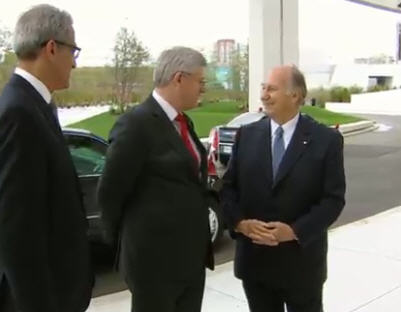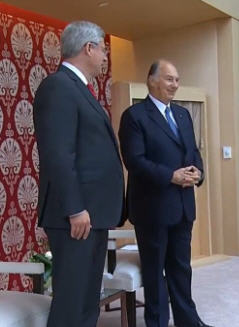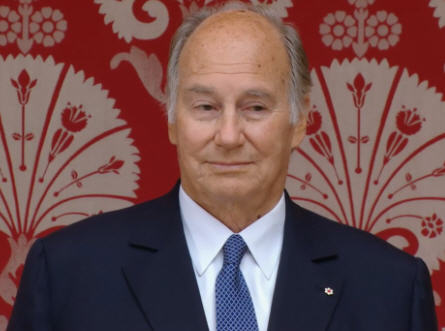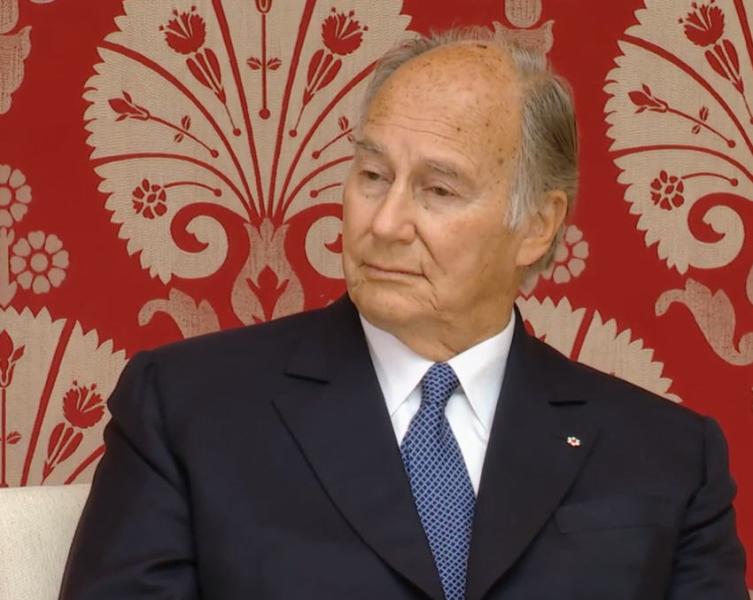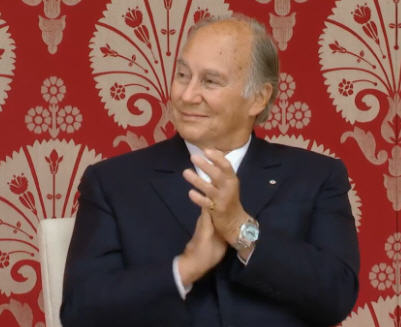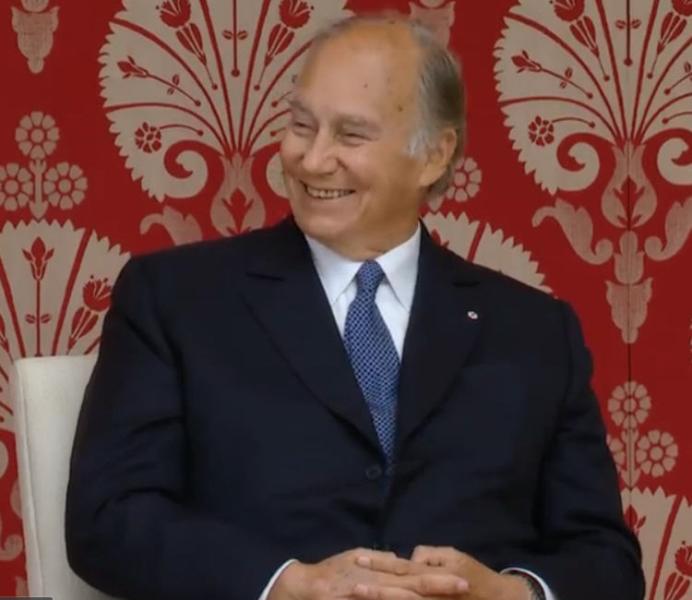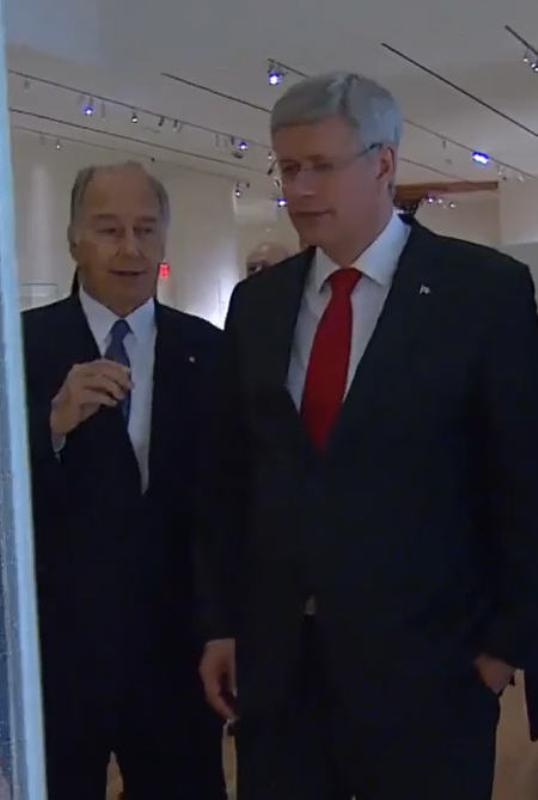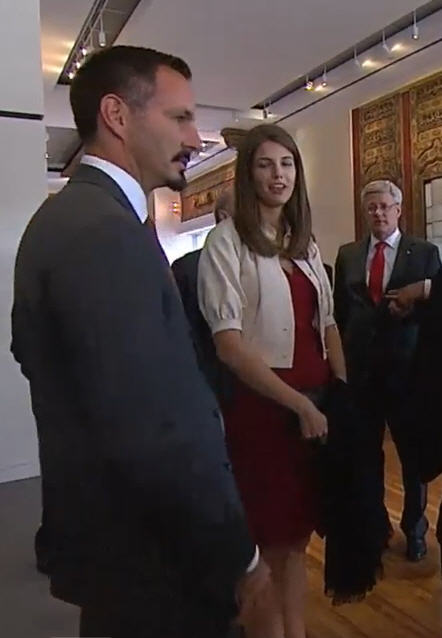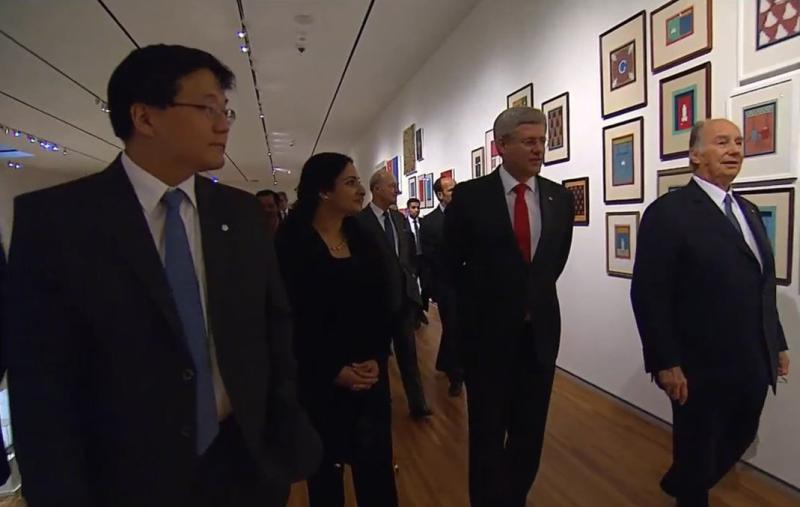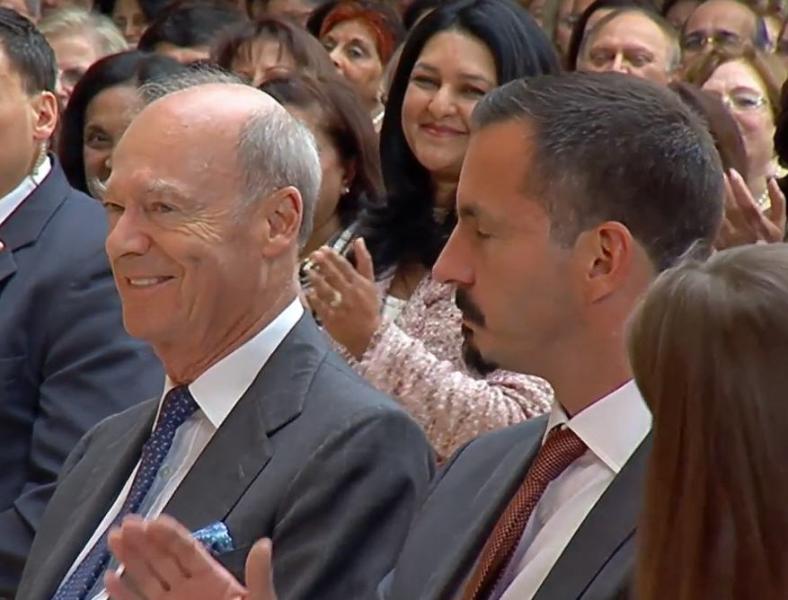This section should only contain news about the Imam such as arrival, programs etc.. Newspapers on Museum opening should be in http://www.ismaili.net/html/modules.php ... 6630#46630
For Jamati activities during the visit, there is a specific section in the Jamati Activities. http://www.ismaili.net/html/modules.php ... pic&t=8607
Put here only news on opening of Museum, Banquet, meetings during this visit etc... Not only in Toronto but also Ottawa etc.
H.H. The Aga Khan in Canada September 2014
WEBCAST: Opening ceremonies of the Ismaili Centre Toronto and Aga Khan Museum
Prime Minister Stephen Harper and His Highness the Aga Khan will officially open the Ismaili Centre Toronto and Aga Khan Museum today. The ceremonies will begin at the Ismaili Centre and conclude at the Museum. In honour of this occasion, a live webcast of the ceremonies will be streamed here.
This webcast will take place on Friday, September 12, 2014 soon after 2:00 PM Toronto time (GMT-4).
https://www.agakhanmuseum.org/about/inauguration
Prime Minister Stephen Harper and His Highness the Aga Khan will officially open the Ismaili Centre Toronto and Aga Khan Museum today. The ceremonies will begin at the Ismaili Centre and conclude at the Museum. In honour of this occasion, a live webcast of the ceremonies will be streamed here.
This webcast will take place on Friday, September 12, 2014 soon after 2:00 PM Toronto time (GMT-4).
https://www.agakhanmuseum.org/about/inauguration
Photos of 12 September 2014
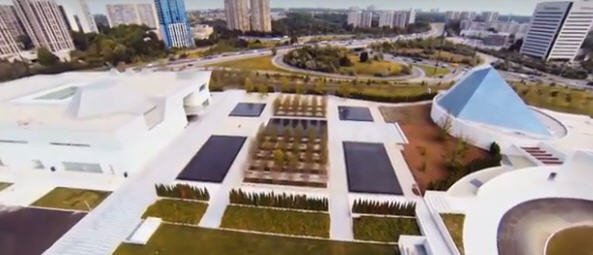
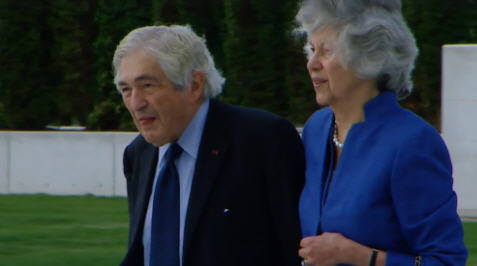
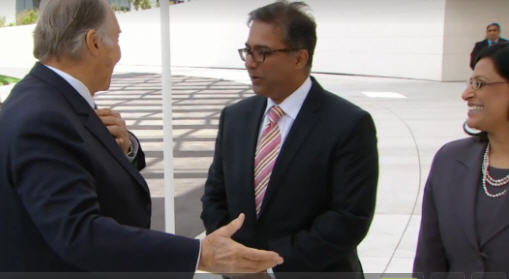

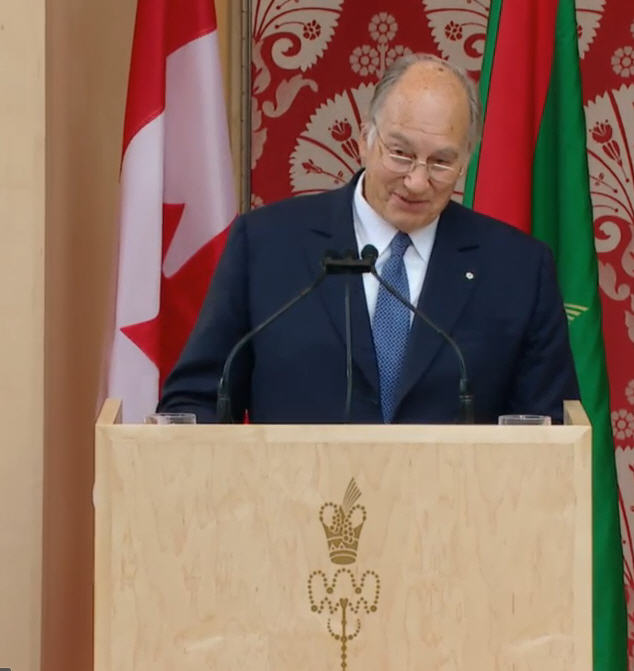





Last edited by Admin on Fri Sep 12, 2014 6:32 pm, edited 3 times in total.
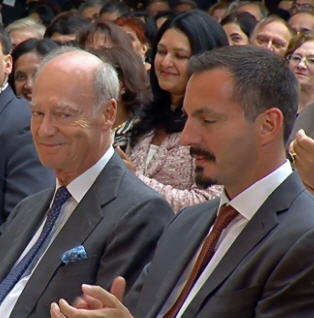
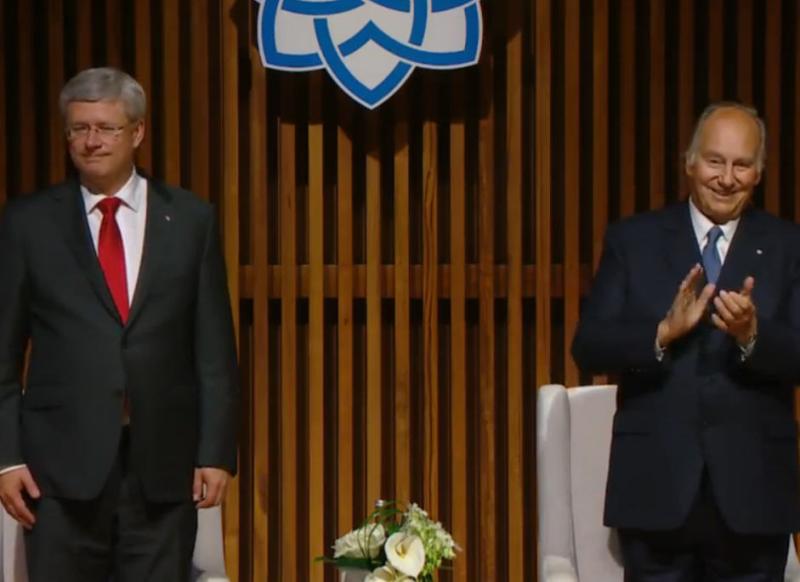

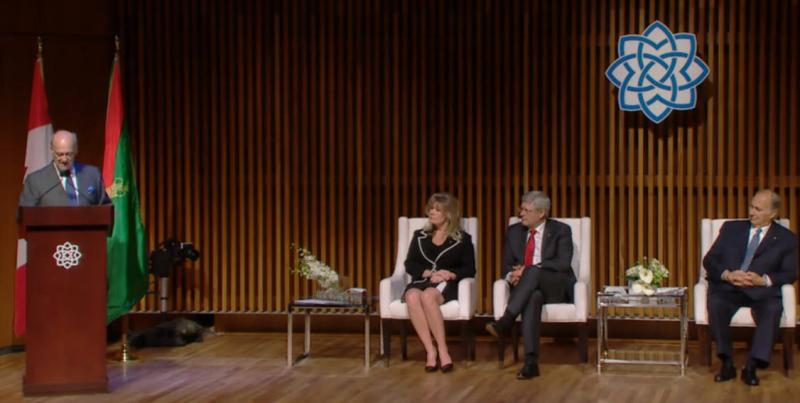
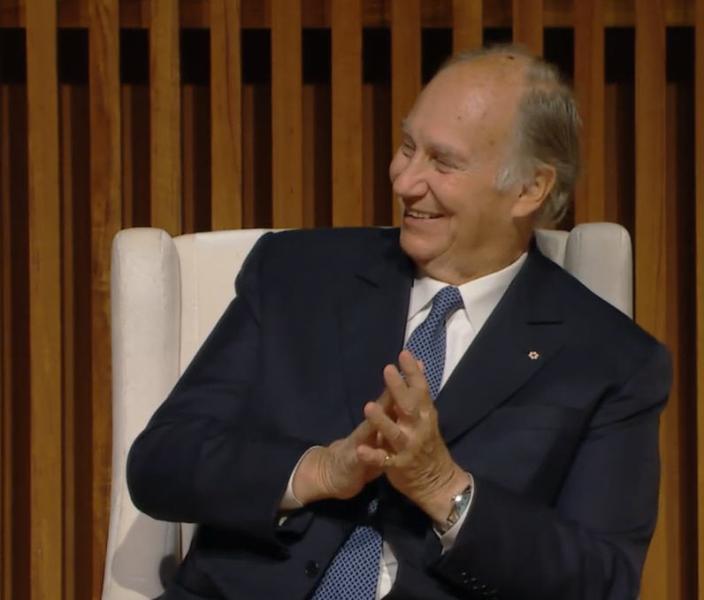
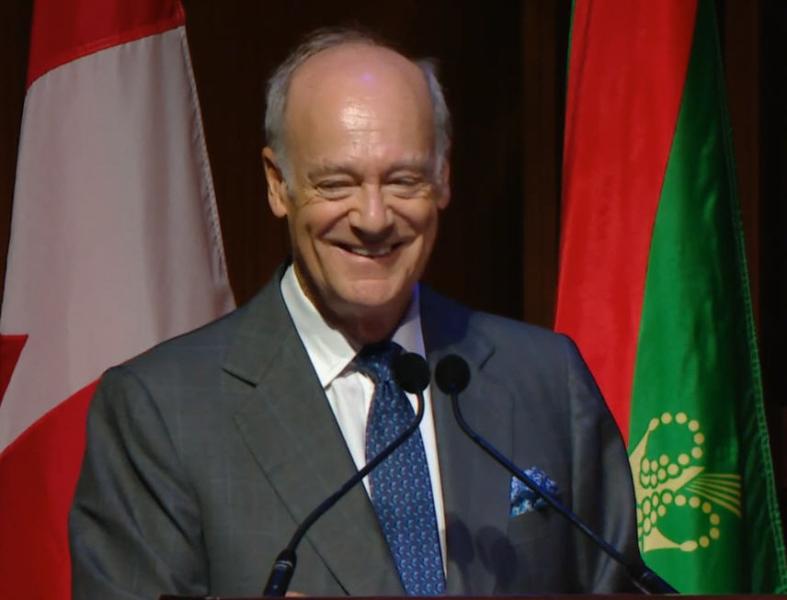
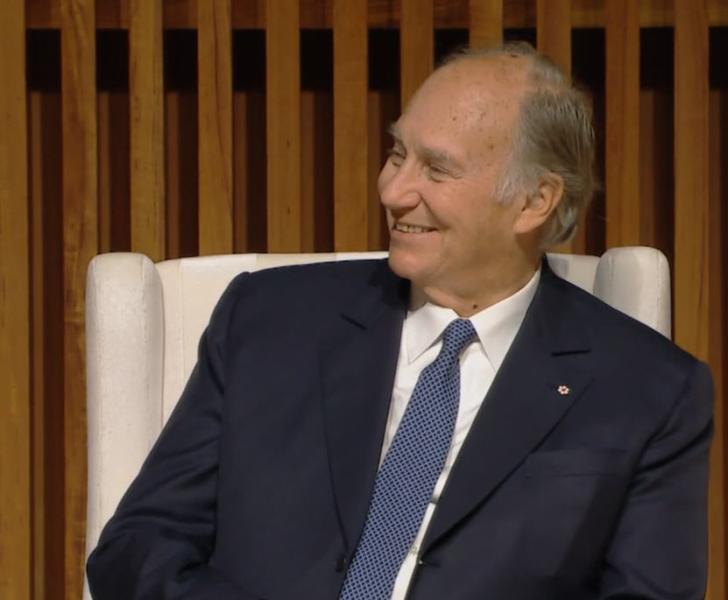
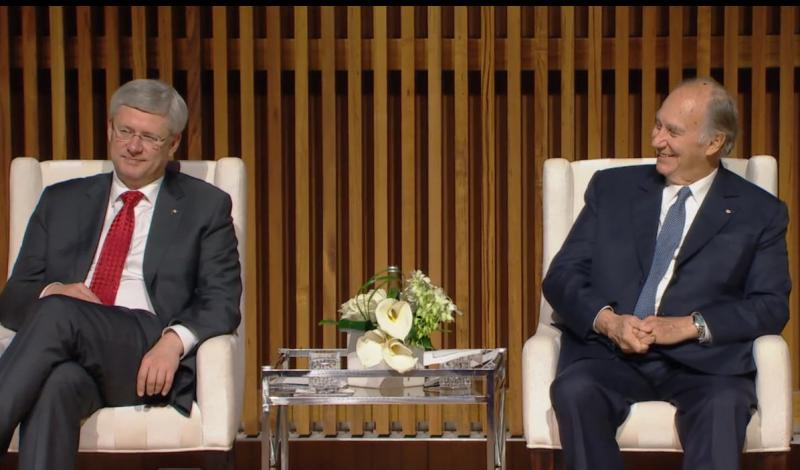
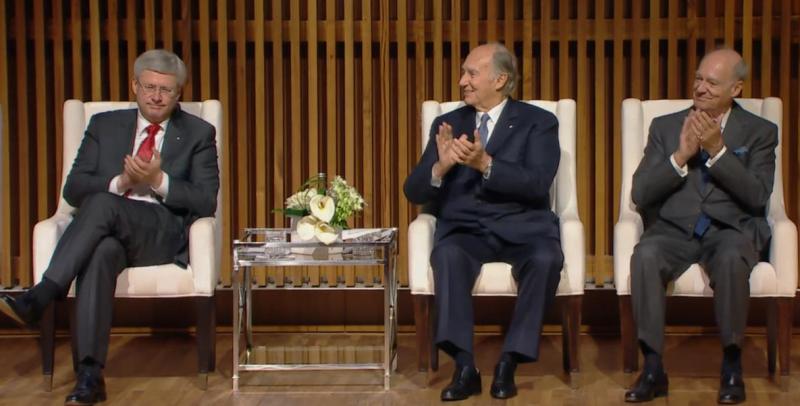
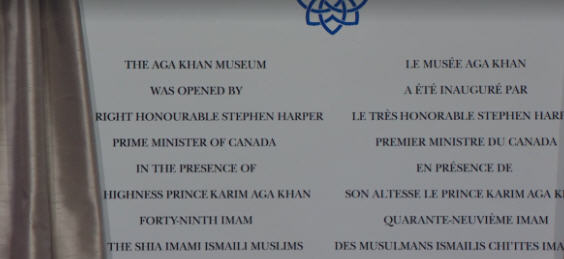



PM joins His Highness the Aga Khan in the opening ceremony of the Ismaili Centre and the Aga Khan Museum
Last edited by Admin on Fri Sep 12, 2014 11:43 pm, edited 1 time in total.
Last edited by Admin on Tue Sep 16, 2014 10:34 pm, edited 1 time in total.
Aga Khan Speech opening Ismaili Center Toronto
Video on Youtube
http://www.youtube.com/watch?v=fMcR1LXTzn8
https://www.youtube.com/watch?v=nEqiqlr_8EM
https://www.youtube.com/watch?v=IHe3otsy46A
http://www.theismaili.org/ismailicentre ... ny-toronto
https://www.youtube.com/watch?v=De-tHf3Kz6o
Speech by Mawlana Hazar Imam
At the Opening Ceremony of
The Ismaili Centre, Toronto
Friday, 12 September 2014
Bismillah-ir-Rahman-ir-Rahim
Prime Minister Harper,
Words fail me — and that’s not often the case — but words fail me to thank you enough for your most gracious and warm comments on this occasion.
This is indeed a magnificent day.
It is not so often that we have an opportunity of this sort -- to come together in a beautiful setting, in a wonderful spirit of friendship, and to dedicate such a splendid architectural accomplishment.
As we inaugurate this building, we also have the opportunity to contemplate what it represents: the inspiring traditions of the past, the stirring challenges of the future, and the continuing search for peace through prayer.
Depuis les 1 400 ans qui se sont écoulés depuis la révélation de la foi musulmane, le monde de l'Islam a évolué en un vaste ensemble d'interprétations et de traditions -- comme ce fut le cas des autres grandes religions monothéistiques du monde. La communauté ismaïlie compte bien entendu au nombre de ces expressions, spécifique dans sa reconnaissance d'un Imam unique et vivant mais aussi dans son historicité géographique très diverse, qui s'exprime sous la forme d'importantes communautés dans de nombreuses parties du monde. (English Translation on the bottom of the page)
Canada, of course, has become a significant newer homeland for our community, as Ismailis have come here from so many places -- from East Africa, from Tajikistan, from Afghanistan, from Syria and from other parts of the world -- all choosing to develop their destinies under the Canadian flag.
One of the ways in which Ismailis have expressed their identity wherever they have lived is through their places of prayer, known today as the Jamatkhana. Other Muslim communities give their religious buildings different names: from ribat and zawiyya to khanaqa. And, in addition, there are other places where Muslims of all interpretations can come together, such as in non-denominational mosques.
What we dedicate today is what we identify as an Ismaili Centre — a building that is focused around our Jamatkhana, but which also includes many secular spaces. These are places where Ismailis and non-Ismailis, Muslims and non-Muslims, will gather for shared activities — seminars and lectures, recitals and receptions, exhibitions and social events. These meeting halls and lounges, work offices and conference rooms will serve the organisational needs of the Ismaili community. But they will also, we trust, be filled with the sounds of enrichment, dialogue and warm human rapport, as Imailis and non-Ismailis share their lives in a healthy gregarious spirit!
Yes! We are a community that welcomes the smile!
And soaring above it all is the great crystalline dome that you have observed, through which light from the prayer hall will provide a glowing beacon, symbolising the spirit of enlightenment that will always be at the heart of the Centre’s life.
The size and complexity that we celebrate today has been immense, and so is the list of those whom we salute for having made it possible.
Certainly our list should begin with the Prime Minister, with whom we have shared so many magnificent moments and so many worthwhile endeavours. On many fronts, in this country and beyond, the Canadian Government has been a strong, significant partner for the Ismaili Imamat and the Aga Khan Development Network. And we recall with special pleasure, of course, the Foundation Ceremony on this site, at which the Prime Minister so graciously presented me with the enormous honor of Canadian Citizenship.
We are grateful as well, to all the officials who have facilitated this accomplishment, in the Federal government, and in the Provincial government, where the Premier’s unwavering enthusiasm has meant so much to us. And the same thing is true of the City of Toronto, and its dedicated councilors and staff, as well as the Bata family, and the people of this neighbourhood.
I am also deeply pleased to salute the donors who have so generously supported the building of outstanding Ismaili Centres across the world, including this Centre here in Toronto, as well as the dedicated leaders, staff and volunteers from the Ismaili community who have also played such a significant role.
And, of course, I want to recognise with special appreciation those who designed, built and decorated this space, especially the eminent architects Charles Correa and his daughter Nondita. Let me underscore as well, the important contributions of the Toronto firm of Moriyama and Teshima, of Gotham Notting Hill, and of the great German-Muslim artist, Karl Schlamminger.
And, of course, it is with deepest admiration that I thank the person whose guiding hand has been so important at every stage of this project: a member of my family, my brother, Prince Amyn. Thank You.
Our focus today is on two splendid new buildings here on Wynford Drive, but I would be remiss not to mention the new public space that will tie these two new buildings together: the Aga Khan Park, which will have its official opening when the vegetation matures next year.
When our planning for the Toronto Ismaili Centre started in 1966, we decided to ask the younger generation of Ismailis about their vision for this building. What did they want it to represent? How did they see it functioning? In response, young people from the ages of 18 to 27 generously shared their aspirations with us. They told us that they wanted a building that would be forward looking, while also being anchored in traditional community values. They also wanted a building in which they could strengthen their personal relationships -– a place where they could not only unite in prayer, but could also develop new life-shaping associations — amongst themselves and with other Canadians.
They hoped that the Centre would become, and I quote, “... a great avenue through which they could integrate into society at large, a place that would command the respect of all those who would visit it."
It is with all of these thoughts in mind that we selected for the Centre a world-class architect who had designed for many faiths, but always in an idiom for today and tomorrow. He was a man who deeply believes, as he puts it, that “tradition and modernity are not opposites.” And the result, as you can see, is a building in which traditional elements of Muslim architecture are given a confident, forward-looking vocabulary.
The young men and women whose views we sought back in the year 2000 are now between 32 and 41 years old — in the middle of their careers. It is my earnest hope that the formation of this Centre, which will now become theirs, has responded to their hopes of 14 years ago.
Let me acknowledge, of course, that a part of that response is found in the entirety of this new complex on Wynford Drive — including the Aga Khan Museum — welcoming the public with its unique concentration of cultural assets, and the surrounding Park — providing a remarkable environment for relaxation and contemplation, I got it right, for peoples of all ages and backgrounds.
In sum, I am pleased to think that the complex being opened today does indeed meet the requests that were articulated 14 years ago... even if I have not been able to concentrate all of them in one building!
The fusion of tradition and modernity which this building achieves, and the blend of spiritual, educational and social objectives that it embodies, have also characterised our other Ismaili Centres — in Vancouver, London, Lisbon, Dubai, and Dushanbe. All of them were designed by architects of great international standing, and, I would emphasise, of great multi-cultural sensitivity.
Charles Correa, for example, comes from an Indian background and has also designed Hindu and Christian buildings. The architect for our Vancouver Centre 30 years ago was Bruno Freschi, whose family is of Italian background, and whose earlier work had included a Sikh place of worship. The new Aga Khan Park was designed by an architect of Lebanese heritage, Vladimir Djurovic. And the Aga Khan Museum is the work of a superb Japanese professional, Fumihiko Maki. How pleased we are that all of these fine artists are with us today.
In its origins, in its design, and in its programmes and activities, the complex we inaugurate today is animated by a truly pluralistic spirit. In this respect too, it reflects the deep-set Ismaili values — pluralistic commitments that are so deeply embedded in Canadian values.
These commitments have been strikingly evident in a recent government initiative that I would like to mention today. I refer to the establishment, less than two years ago, of the new Office of Religious Freedom, led by Ambassador Andrew Bennett. We hope that our organisations in Canada can be helpful allies of the Office of Religious Freedom, as it works to support people throughout the world who are targeted because of their religious affiliations.
Just a week ago, Ambassador Bennett and the Minister for Multiculturalism, Mr Kenney, received the leader of an ancient religious minority as he arrived from Egypt for an extended visit to Canada. He was Pope Tawadros, of the Christian Coptic Orthodox Church. Canada’s effort to extend the hand of friendship to Pope Tawadros, whose people have come through difficult times, confirms and renews the great Canadian message of universal welcome.
Let me conclude by returning to another context in which the hand of friendship has been playing a major role. When I mentioned that our planning for this complex began 18 years ago, some of you probably wondered how people sustained their enthusiasm through such a long process — yes 18 years! My response is to say that throug these 18 years, we have been inspired by a great sense of common purpose, as we have sought to create places and spaces of true enlightenment. And, in doing so, we have also been strengthened by a pronounced spirit of friendship.
And what a joy it is to celebrate that spirit, at a time when so much of the world’s attention is focused on climates of belligerence.
This first step in the planning of the Centre in the late 1900s was to find an appropriate building site, one that would be convenient to a large number of Ismailis. This was a challenge in and of itself, as we tried to reconcile the needs of more established Ismailis with the requirements of newly arriving and less settled immigrants. After a long search, we selected a site which was little more than half of the site we have today — it was located where the new Museum is now standing. Happily, we were successful in acquiring that land, and it was evident that the hands of friendship helped to make that acquisition possible.
As the project progressed, we learned that the Bata family was intending to give up its office building on a site adjacent to ours — an elegant building, but one where time had taken its toll. Once again the hand of friendship was extended, and Mrs Bata made it possible for us to acquire that building. Because it stood on the highest point in the area, we decided to move the Ismaili Centre to this site, and to redesign it accordingly.
The next step, of course, was to seek approval to remove the Bata building. As it became apparent over time that the Bata building had little residual life, the spirit of friendship again was present and we were authorised to replace it.
As these events unfolded, my late uncle, Prince Sadruddin Aga Khan, passed away, and his widow, Princess Catherine, invited me to become the owner of their remarkable art collection. Here again the hand of generous friendship was extended, this time by my own family. Regrettably, Princess Catherine cannot be with us today. But I might note in passing that the decisive role at critical junctures in this process was played by two remarkable women: Princess Catherine and Mrs Bata.
And so it was that things came together. I was able to join my late uncle’s collection with part of the collection that I had assembled for The Institute of Ismaili Studies in London, and with some of my personal objects. But where should this assembled collection be situated? After numerous discussions with many thoughtful people, the decision was made to build a museum on the very site that had been selected originally for the Ismaili Centre.
And here we are today. The story, over eighteen years has indeed, been one of deeply shared purpose.
I hope you will join me in my profound happiness in recalling the cradle of friendship in which this Centre has been born. And I know that all of you will also share my profound wish that the Centre will now prolong, decade after decade, its beautiful legacy of friendship and enlightenment.
Thank you.
-----------------------------
English Translation of the French paragraph in the Speech:
Since 1,400 years that have elapsed since the revelation of the Muslim Faith, The world of Islam has evolved in a vast array of interpretations and traditions - as was the case for the other monotheistic faiths in the world.
The ismaili community is of course part of these expressions, specific in its recognition of a unique and living Imam but also in its very diverse geographical historicity, which expresses itself in large communities in many parts of the world.
http://www.youtube.com/watch?v=fMcR1LXTzn8
https://www.youtube.com/watch?v=nEqiqlr_8EM
https://www.youtube.com/watch?v=IHe3otsy46A
http://www.theismaili.org/ismailicentre ... ny-toronto
https://www.youtube.com/watch?v=De-tHf3Kz6o
Speech by Mawlana Hazar Imam
At the Opening Ceremony of
The Ismaili Centre, Toronto
Friday, 12 September 2014
Bismillah-ir-Rahman-ir-Rahim
Prime Minister Harper,
Words fail me — and that’s not often the case — but words fail me to thank you enough for your most gracious and warm comments on this occasion.
This is indeed a magnificent day.
It is not so often that we have an opportunity of this sort -- to come together in a beautiful setting, in a wonderful spirit of friendship, and to dedicate such a splendid architectural accomplishment.
As we inaugurate this building, we also have the opportunity to contemplate what it represents: the inspiring traditions of the past, the stirring challenges of the future, and the continuing search for peace through prayer.
Depuis les 1 400 ans qui se sont écoulés depuis la révélation de la foi musulmane, le monde de l'Islam a évolué en un vaste ensemble d'interprétations et de traditions -- comme ce fut le cas des autres grandes religions monothéistiques du monde. La communauté ismaïlie compte bien entendu au nombre de ces expressions, spécifique dans sa reconnaissance d'un Imam unique et vivant mais aussi dans son historicité géographique très diverse, qui s'exprime sous la forme d'importantes communautés dans de nombreuses parties du monde. (English Translation on the bottom of the page)
Canada, of course, has become a significant newer homeland for our community, as Ismailis have come here from so many places -- from East Africa, from Tajikistan, from Afghanistan, from Syria and from other parts of the world -- all choosing to develop their destinies under the Canadian flag.
One of the ways in which Ismailis have expressed their identity wherever they have lived is through their places of prayer, known today as the Jamatkhana. Other Muslim communities give their religious buildings different names: from ribat and zawiyya to khanaqa. And, in addition, there are other places where Muslims of all interpretations can come together, such as in non-denominational mosques.
What we dedicate today is what we identify as an Ismaili Centre — a building that is focused around our Jamatkhana, but which also includes many secular spaces. These are places where Ismailis and non-Ismailis, Muslims and non-Muslims, will gather for shared activities — seminars and lectures, recitals and receptions, exhibitions and social events. These meeting halls and lounges, work offices and conference rooms will serve the organisational needs of the Ismaili community. But they will also, we trust, be filled with the sounds of enrichment, dialogue and warm human rapport, as Imailis and non-Ismailis share their lives in a healthy gregarious spirit!
Yes! We are a community that welcomes the smile!
And soaring above it all is the great crystalline dome that you have observed, through which light from the prayer hall will provide a glowing beacon, symbolising the spirit of enlightenment that will always be at the heart of the Centre’s life.
The size and complexity that we celebrate today has been immense, and so is the list of those whom we salute for having made it possible.
Certainly our list should begin with the Prime Minister, with whom we have shared so many magnificent moments and so many worthwhile endeavours. On many fronts, in this country and beyond, the Canadian Government has been a strong, significant partner for the Ismaili Imamat and the Aga Khan Development Network. And we recall with special pleasure, of course, the Foundation Ceremony on this site, at which the Prime Minister so graciously presented me with the enormous honor of Canadian Citizenship.
We are grateful as well, to all the officials who have facilitated this accomplishment, in the Federal government, and in the Provincial government, where the Premier’s unwavering enthusiasm has meant so much to us. And the same thing is true of the City of Toronto, and its dedicated councilors and staff, as well as the Bata family, and the people of this neighbourhood.
I am also deeply pleased to salute the donors who have so generously supported the building of outstanding Ismaili Centres across the world, including this Centre here in Toronto, as well as the dedicated leaders, staff and volunteers from the Ismaili community who have also played such a significant role.
And, of course, I want to recognise with special appreciation those who designed, built and decorated this space, especially the eminent architects Charles Correa and his daughter Nondita. Let me underscore as well, the important contributions of the Toronto firm of Moriyama and Teshima, of Gotham Notting Hill, and of the great German-Muslim artist, Karl Schlamminger.
And, of course, it is with deepest admiration that I thank the person whose guiding hand has been so important at every stage of this project: a member of my family, my brother, Prince Amyn. Thank You.
Our focus today is on two splendid new buildings here on Wynford Drive, but I would be remiss not to mention the new public space that will tie these two new buildings together: the Aga Khan Park, which will have its official opening when the vegetation matures next year.
When our planning for the Toronto Ismaili Centre started in 1966, we decided to ask the younger generation of Ismailis about their vision for this building. What did they want it to represent? How did they see it functioning? In response, young people from the ages of 18 to 27 generously shared their aspirations with us. They told us that they wanted a building that would be forward looking, while also being anchored in traditional community values. They also wanted a building in which they could strengthen their personal relationships -– a place where they could not only unite in prayer, but could also develop new life-shaping associations — amongst themselves and with other Canadians.
They hoped that the Centre would become, and I quote, “... a great avenue through which they could integrate into society at large, a place that would command the respect of all those who would visit it."
It is with all of these thoughts in mind that we selected for the Centre a world-class architect who had designed for many faiths, but always in an idiom for today and tomorrow. He was a man who deeply believes, as he puts it, that “tradition and modernity are not opposites.” And the result, as you can see, is a building in which traditional elements of Muslim architecture are given a confident, forward-looking vocabulary.
The young men and women whose views we sought back in the year 2000 are now between 32 and 41 years old — in the middle of their careers. It is my earnest hope that the formation of this Centre, which will now become theirs, has responded to their hopes of 14 years ago.
Let me acknowledge, of course, that a part of that response is found in the entirety of this new complex on Wynford Drive — including the Aga Khan Museum — welcoming the public with its unique concentration of cultural assets, and the surrounding Park — providing a remarkable environment for relaxation and contemplation, I got it right, for peoples of all ages and backgrounds.
In sum, I am pleased to think that the complex being opened today does indeed meet the requests that were articulated 14 years ago... even if I have not been able to concentrate all of them in one building!
The fusion of tradition and modernity which this building achieves, and the blend of spiritual, educational and social objectives that it embodies, have also characterised our other Ismaili Centres — in Vancouver, London, Lisbon, Dubai, and Dushanbe. All of them were designed by architects of great international standing, and, I would emphasise, of great multi-cultural sensitivity.
Charles Correa, for example, comes from an Indian background and has also designed Hindu and Christian buildings. The architect for our Vancouver Centre 30 years ago was Bruno Freschi, whose family is of Italian background, and whose earlier work had included a Sikh place of worship. The new Aga Khan Park was designed by an architect of Lebanese heritage, Vladimir Djurovic. And the Aga Khan Museum is the work of a superb Japanese professional, Fumihiko Maki. How pleased we are that all of these fine artists are with us today.
In its origins, in its design, and in its programmes and activities, the complex we inaugurate today is animated by a truly pluralistic spirit. In this respect too, it reflects the deep-set Ismaili values — pluralistic commitments that are so deeply embedded in Canadian values.
These commitments have been strikingly evident in a recent government initiative that I would like to mention today. I refer to the establishment, less than two years ago, of the new Office of Religious Freedom, led by Ambassador Andrew Bennett. We hope that our organisations in Canada can be helpful allies of the Office of Religious Freedom, as it works to support people throughout the world who are targeted because of their religious affiliations.
Just a week ago, Ambassador Bennett and the Minister for Multiculturalism, Mr Kenney, received the leader of an ancient religious minority as he arrived from Egypt for an extended visit to Canada. He was Pope Tawadros, of the Christian Coptic Orthodox Church. Canada’s effort to extend the hand of friendship to Pope Tawadros, whose people have come through difficult times, confirms and renews the great Canadian message of universal welcome.
Let me conclude by returning to another context in which the hand of friendship has been playing a major role. When I mentioned that our planning for this complex began 18 years ago, some of you probably wondered how people sustained their enthusiasm through such a long process — yes 18 years! My response is to say that throug these 18 years, we have been inspired by a great sense of common purpose, as we have sought to create places and spaces of true enlightenment. And, in doing so, we have also been strengthened by a pronounced spirit of friendship.
And what a joy it is to celebrate that spirit, at a time when so much of the world’s attention is focused on climates of belligerence.
This first step in the planning of the Centre in the late 1900s was to find an appropriate building site, one that would be convenient to a large number of Ismailis. This was a challenge in and of itself, as we tried to reconcile the needs of more established Ismailis with the requirements of newly arriving and less settled immigrants. After a long search, we selected a site which was little more than half of the site we have today — it was located where the new Museum is now standing. Happily, we were successful in acquiring that land, and it was evident that the hands of friendship helped to make that acquisition possible.
As the project progressed, we learned that the Bata family was intending to give up its office building on a site adjacent to ours — an elegant building, but one where time had taken its toll. Once again the hand of friendship was extended, and Mrs Bata made it possible for us to acquire that building. Because it stood on the highest point in the area, we decided to move the Ismaili Centre to this site, and to redesign it accordingly.
The next step, of course, was to seek approval to remove the Bata building. As it became apparent over time that the Bata building had little residual life, the spirit of friendship again was present and we were authorised to replace it.
As these events unfolded, my late uncle, Prince Sadruddin Aga Khan, passed away, and his widow, Princess Catherine, invited me to become the owner of their remarkable art collection. Here again the hand of generous friendship was extended, this time by my own family. Regrettably, Princess Catherine cannot be with us today. But I might note in passing that the decisive role at critical junctures in this process was played by two remarkable women: Princess Catherine and Mrs Bata.
And so it was that things came together. I was able to join my late uncle’s collection with part of the collection that I had assembled for The Institute of Ismaili Studies in London, and with some of my personal objects. But where should this assembled collection be situated? After numerous discussions with many thoughtful people, the decision was made to build a museum on the very site that had been selected originally for the Ismaili Centre.
And here we are today. The story, over eighteen years has indeed, been one of deeply shared purpose.
I hope you will join me in my profound happiness in recalling the cradle of friendship in which this Centre has been born. And I know that all of you will also share my profound wish that the Centre will now prolong, decade after decade, its beautiful legacy of friendship and enlightenment.
Thank you.
-----------------------------
English Translation of the French paragraph in the Speech:
Since 1,400 years that have elapsed since the revelation of the Muslim Faith, The world of Islam has evolved in a vast array of interpretations and traditions - as was the case for the other monotheistic faiths in the world.
The ismaili community is of course part of these expressions, specific in its recognition of a unique and living Imam but also in its very diverse geographical historicity, which expresses itself in large communities in many parts of the world.
Last edited by Admin on Tue Sep 16, 2014 10:48 pm, edited 1 time in total.
Speech by Prince Amyn Aga Khan
At the Opening of the Aga Khan Museum
in Toronto
Friday, 12 September 2014
Bismillah-ir-Rahman-ir-Rahim
Prime Minister Harper,
Your Highness, my brother,
Madame Clarkson,
Excellencies,
Ms Shelly Glover, Minister of Canadian Heritage and Official Languages,
Honourable Ministers,
Chancelier de Broglie,
Distinguished Guests,
Ladies and Gentlemen,
Friends,
What a pleasure it is to welcome you to this exceptional place on this most special day. Exceptional because we are inaugurating today not one but two new and unique buildings, facing each other across a new and unique park, two utterly unusual pieces of architecture housing surprising reflections of beauty. This is also a special moment because of the special role that we expect the Aga Khan Museum to play, as a gateway into the history and artistic traditions of the Muslim world — nearly a fifth of humanity — and for those non-Muslims and even Muslims who wish better to understand that world.
The Aga Khan Museum will play this role at a time when such a gateway is profoundly needed. All across the planet, political and economic developments, the forces of globalisation, are connecting Muslim and non-Muslim societies ever more intimately and yet, at the same time, misunderstandings between those worlds are becoming an increasingly dangerous threat. Expanded and improved means of communication can as easily be used to cause divisions and fragmentation as they can to unify and breed understanding. Despite the advances we have witnessed through improved technology and through globalisation, a knowledge gap continues to exist and perhaps even grow, and the result of that gap is a vacuum within which myths and stereotypes can so easily fester, fed by the amplification of extreme minority voices. Symbols become confused with emblems. Imagery of demagoguery or despotism, of intolerance and conflict, come to dominate in such an environment with global repercussions.
That context is precisely the reason that the potential contribution of an institution such as the Aga Khan Museum can be so important. I believe strongly that art and culture can have a profound impact in healing misunderstanding and in fostering trust even across great divides. This is the extraordinary purpose, the special mandate, to which this Museum is dedicated.
In its role to reveal and to stimulate dialogue between different cultures, the Aga Khan Museum will continue a long history of cultural sharing between Islam and the West.
Historians tell us that as early as the 9th century, trade and commerce were bringing objects of art from the Muslim to the European world – from the far reaches of the Iranian region, for example, all the way to the Carolingian courts of Northern Europe. A century later, rock crystal ewers and other Islamic art from North Africa, then part of the Fatimid Caliphate, appeared in the collections of European courts and can be traced in the ledgers of the treasuries of European churches. By the time you get to the “Cabinet de Curiosités” of the 16th century in Europe, often partially open to the public and perhaps the precursors of the modern museum, numerous works of art from the Muslim world are to be found. Of course, at that time, and indeed for centuries afterward, the acquisition of cultural treasures in the West happened mostly in private settings, in aristocratic homes and palaces. Only later, as the idea of the museum as a public institution began to take hold, especially after the opening of the British Museum in London in the mid-18th century and the Louvre in Paris, art from the Muslim world began to find a wider European audience. Colonialism inevitably increased that audience.
In the Muslim world, collecting and public displays of rare and beautiful objects were common. The notion of Waqf itself, of property given for the public good and for religious purposes, engendered a widespread movement to collect. Public displays of artefacts were a feature of the Fatimid period and precious objects from the treasure were publicly paraded through the streets of Cairo. In Central Asia, in the middle periods many Muslim rulers collected and displayed to visitors their finest objects. From as early as 1607, for instance, in Safavid Iran, Shah Abbas the Great organised public displays of his collection and made a Waqf donation to his ancestral shrine of his gold, silver and jade vessels, his Chinese porcelain, his Persian manuscripts and textiles, thus making them available to be seen by visitors to that shrine. Like in the West, the largest collections were usually the possessions of kings, caliphs and religious institutions. The oldest museum in Asia, I am told, was established in the late 18th century by the Asiatic Society in Bengal and, of course, Khedive Ismail conceived the Cairo Museum in the late 19th century.
What should be noted is that there is a long history from the earliest courts across the Ummah such as the Abassids in Baghdad in the 8th century, or the Fatimids in Egypt, of seeking out and bringing together the best artists, scientists and scholars, the best creators, of the time, irrespective of their religious, ethnic or political backgrounds. The pursuit of cultural excellence resulted in Western, as also Far Eastern art and learning becoming important elements in Muslim life within an ethic of tolerance and collaboration. A manifestation of this approach was, of course, Al Andalous in the Iberian Peninsula where Muslim leaders welcomed Christian and Jewish participants in a rich cultural life, pluralistic so to speak. The same approach characterised the Mughal courts of Hindustan, the Uzbecks of Bokhara, Ottoman Turkey.
One should not forget too that creating and maintaining libraries has always been part of the lifestyles of the wealthier men and women in Muslim countries. And those libraries, as often as not, contained illustrations or miniatures in their manuscripts. I cannot help wondering whether libraries and museums do not overlap in function and whether the former do not inevitably lead to the latter.
I think it is accurate to say that in Muslim societies the pursuit of artistic and cultural excellence has for many centuries been a hallmark of the life in those societies, just as for them the aesthetic experience has always been seen as part of the learning process.
The Aga Khan Museum in Toronto, that we are opening today, will differ slightly from the many famous institutions that currently have impressive collections of Islamic art in the Western world. For this Museum will be one of the very few institutions in the Western world, and indeed the only one in the Western hemisphere, that will be entirely devoted to the acquisition, preservation, study and display of the arts of Muslim civilisations. The great majority of the best known Western institutions have collections of Islamic art that are a smaller part of their larger international collections.
Here in Toronto, visitors from all over the world will be uniquely able to experience and appreciate the intellectual, cultural and artistic heritage of Muslim civilisations in all of its rich diversity. Simply by emphasising that diversity, the Museum will make an important point that is so often now misunderstood by both the Muslim and non-Muslim worlds.
The thousand and more treasures gathered here come from Spain, the Maghreb, the Arab near-East, from the Iranian world that stretched through Afghanistan and Central Asia, from the courts of Hindustan, now India and Pakistan, and the Muslim communities of China. As I reflect on this diversity, the word “connection” comes to mind for it will be the special opportunity of this Museum to connect a broad array of Muslim cultures with one another, while also connecting visitors from other cultures to the richness of the Muslim past. Cultural connection will be at the heart of the Museum’s mission: to increase and illuminate the dialogue between different Muslim civilisations themselves and between those civilisations and non-Muslim civilisations.
It is my hope that this Museum will execute its mandate in a variety of ways which will go beyond what happens on casual, cursory visits, although we know that even short visits in a place like this can become moments of powerful inspiration: learning can happen consciously or unconsciously, understanding can be instinctive or reasoned. The work of the Museum will follow in the best tradition of the venerable Islamic cultural centrer that I have mentioned earlier, where great libraries and other collections became prodigious centres for a continuing process of intellectual and artistic enquiry — a process of exploration and edification, of dialogue and discovery. It is my hope and expectation that this Museum will play an active and effective educational role, helping visitors to appreciate, understand and empathise with an aesthetic and a culture new but no longer foreign or alien to them. Furthermore, the Museum should endeavour to institute creative outreach activities into the schools and other educational institutions in this area. Personally, I do not subscribe to the current theory, possibly chic, that study of our cultural past by young artists limits, or even thwarts, their creativity and spontaneity. We are what we come from, and to think we come from nowhere is both an intellectual and a natural fallacy.
Having said that, the Aga Khan Museum will regularly organise temporary exhibitions of contemporary artists too, as it should reflect the evolution of the creative arts in the Muslim world.
In pursuing these objectives, the Museum will focus its attention not only on the acquisition, preservation and display of visual artistic creations, but also on a wide range of other cultural expressions, including poetry, philosophy and literature, music, architecture, science and social organisation. This is a Museum of Islamic Arts with a broad definition of all that the arts include, and presenting these arts as best we can within their full cultural context. Miniatures were not painted to be hung on white walls in rooms devoid of furniture or furnishings. Metal-ware was, for the most part, designed to be picked up and used or laid on furniture. In the sense that the arts reflect the senses, all of them, that usually one hears as one sees, just as instinct leads us to want to touch what we want to see most clearly, the interplay between the arts is as essential as the inter-relationship of the senses. The challenge will be how best to reveal the dialogue between the different arts themselves.
On the website for the Museum (which I urge you to visit), our distinguished Director, Henry Kim, gives us a picture of what we can anticipate: “Visitors to the Museum”, he says, “are as likely to view our permanent collection as they are to visit one of our many temporary exhibitions, to listen to a performance in the auditorium, attend a class, study architecture, tour the gardens, or sample food from the great cuisines of Turkey, Iran, North Africa, Central Asia and the Indian sub-continent.” As you can see, Henry plans to showcase all the senses, or all the Arts, in this institution, even if his personal emphasis would seem to lie in “the kitchen” and on taste.
An asset for the Museum in the fulfillment of its many-faceted mandate will be its close association with other institutions of the Aga Khan Development Network, many of which are represented here today. Among them are the Aga Khan Trust for Culture, The Historic Cities Program, the Aga Khan University, the Institute for the Study of Muslim Civilisations, the University of Central Asia, the Institute of Ismaili Studies, and the Aga Khan Award for Architecture. I am sure that many of you recall that day, just a little over four years ago, when we came to this site to mark this project’s transition from the planning stage to the building stage, from investigation to construction. And today, we celebrate again as we move from construction to realisation, with an enormous sense of gratitude to all those who have made this day possible.
Despite the difficulty of realising a project as complex as this, the years of imagination, anticipation and effort have finally been rewarded by the joy of realisation and we can now, at last, enter a period of active participation in the great work that this building will make possible.
Je me souviens avec joie et satisfaction d’une discussion tenue en 2000, avec un groupe de jeunes Ismailis d’environ 25 ans d’âges, sur les priorités que nous devrions considérer dans les années à venir, et ces jeunes gens ont placés à l’époque, un musée, une facilité culturelle, une bibliothèque et une cours, allez savoir une cours, sur la liste de priorité. Maintenant, ces jeunes hommes et femmes, dix ans plus vieux et sans doute très nerveux à l’approche de la vieillesse, sont j’espère heureux et fiers de ce que nous avons accompli. (English translation below the text)
There are so many people that I should like to thank today that it is difficult to know where to begin and I worry about forgetting somebody. I should like to give particular thanks to Princess Catherine Aga Khan, the widow of my late uncle, Prince Sadruddin. Not only has the collection that she and my uncle formed over the years constituted the nucleus of the Museum’s collections today, but she has allowed us to repeat, within the Museum, an entire room from their house in Geneva, which we call the Bellerive room, and which is a space I personally find as poetic as it is illuminating. I must also thank my brother - mon brother - and all those who have lent or given works of art to enlarge and expand our collections. And, of course, thanks go to our architects, Fumihiko Maki and Gary Kamemoto, Moriyama and Teshima, to Adrien Gardere and his team of designers, our contractors and sub-contractors, the Imara team who provided project management, and to the many generous friends who donated their time, or already their resources, to ensure that this project took shape.
Professor Maki’s inspiring building that we are opening today faces the new Ismaili Center, designed by Charles Correa, across the Aga Khan Park designed by Vladimir Djurovic. As a whole, this entire site speaks to the unity in Islamic thought – the profound unity – of three great dimensions of human life: the cultural, the spiritual and the natural. There must also be symbolic value in the fact that the three architects who took the lead in designing these spaces come from Japanese, Indian and Lebanese backgrounds – brought together here in the spirit of international partnership which is also such a proud part of Canadian culture.
Let me conclude by saying that if I were looking for a single word to sum up my intention and hope for the Aga Khan Museum, it would be the word “enlightenment”. It is a word which has both cultural and spiritual significance. The history of the thought and the creations of man can perhaps be said to be a long path from one period of enlightenment to another. I would hope that this Museum will contribute to a new period of enlightenment, helping visitors from around the world to rediscover the common symbols that unite us all across the globe, across all civilisations, across time.
And so, it is in a spirit of immense gratitude that we open this Museum, respectful of the rich traditions that it represents and hopeful about the role it can play in the great, continuing work of cultural connection.
Thank you.
---------------------
English translation of French paragraph in the speech above:
I remember with joy and satisfaction of a discussion held in 2000, with a group of young Ismailis about 25 years of age , on the priorities that we should consider in the coming years , and these young people placed at that time, a museum , a cultural facility , a library, and a courtyard , go figure out a courtyard! on the priority list. Now , I hope these young men and women, ten years older and probably very nervous at the approach of old age are happy and proud of what we have accomplished.
At the Opening of the Aga Khan Museum
in Toronto
Friday, 12 September 2014
Bismillah-ir-Rahman-ir-Rahim
Prime Minister Harper,
Your Highness, my brother,
Madame Clarkson,
Excellencies,
Ms Shelly Glover, Minister of Canadian Heritage and Official Languages,
Honourable Ministers,
Chancelier de Broglie,
Distinguished Guests,
Ladies and Gentlemen,
Friends,
What a pleasure it is to welcome you to this exceptional place on this most special day. Exceptional because we are inaugurating today not one but two new and unique buildings, facing each other across a new and unique park, two utterly unusual pieces of architecture housing surprising reflections of beauty. This is also a special moment because of the special role that we expect the Aga Khan Museum to play, as a gateway into the history and artistic traditions of the Muslim world — nearly a fifth of humanity — and for those non-Muslims and even Muslims who wish better to understand that world.
The Aga Khan Museum will play this role at a time when such a gateway is profoundly needed. All across the planet, political and economic developments, the forces of globalisation, are connecting Muslim and non-Muslim societies ever more intimately and yet, at the same time, misunderstandings between those worlds are becoming an increasingly dangerous threat. Expanded and improved means of communication can as easily be used to cause divisions and fragmentation as they can to unify and breed understanding. Despite the advances we have witnessed through improved technology and through globalisation, a knowledge gap continues to exist and perhaps even grow, and the result of that gap is a vacuum within which myths and stereotypes can so easily fester, fed by the amplification of extreme minority voices. Symbols become confused with emblems. Imagery of demagoguery or despotism, of intolerance and conflict, come to dominate in such an environment with global repercussions.
That context is precisely the reason that the potential contribution of an institution such as the Aga Khan Museum can be so important. I believe strongly that art and culture can have a profound impact in healing misunderstanding and in fostering trust even across great divides. This is the extraordinary purpose, the special mandate, to which this Museum is dedicated.
In its role to reveal and to stimulate dialogue between different cultures, the Aga Khan Museum will continue a long history of cultural sharing between Islam and the West.
Historians tell us that as early as the 9th century, trade and commerce were bringing objects of art from the Muslim to the European world – from the far reaches of the Iranian region, for example, all the way to the Carolingian courts of Northern Europe. A century later, rock crystal ewers and other Islamic art from North Africa, then part of the Fatimid Caliphate, appeared in the collections of European courts and can be traced in the ledgers of the treasuries of European churches. By the time you get to the “Cabinet de Curiosités” of the 16th century in Europe, often partially open to the public and perhaps the precursors of the modern museum, numerous works of art from the Muslim world are to be found. Of course, at that time, and indeed for centuries afterward, the acquisition of cultural treasures in the West happened mostly in private settings, in aristocratic homes and palaces. Only later, as the idea of the museum as a public institution began to take hold, especially after the opening of the British Museum in London in the mid-18th century and the Louvre in Paris, art from the Muslim world began to find a wider European audience. Colonialism inevitably increased that audience.
In the Muslim world, collecting and public displays of rare and beautiful objects were common. The notion of Waqf itself, of property given for the public good and for religious purposes, engendered a widespread movement to collect. Public displays of artefacts were a feature of the Fatimid period and precious objects from the treasure were publicly paraded through the streets of Cairo. In Central Asia, in the middle periods many Muslim rulers collected and displayed to visitors their finest objects. From as early as 1607, for instance, in Safavid Iran, Shah Abbas the Great organised public displays of his collection and made a Waqf donation to his ancestral shrine of his gold, silver and jade vessels, his Chinese porcelain, his Persian manuscripts and textiles, thus making them available to be seen by visitors to that shrine. Like in the West, the largest collections were usually the possessions of kings, caliphs and religious institutions. The oldest museum in Asia, I am told, was established in the late 18th century by the Asiatic Society in Bengal and, of course, Khedive Ismail conceived the Cairo Museum in the late 19th century.
What should be noted is that there is a long history from the earliest courts across the Ummah such as the Abassids in Baghdad in the 8th century, or the Fatimids in Egypt, of seeking out and bringing together the best artists, scientists and scholars, the best creators, of the time, irrespective of their religious, ethnic or political backgrounds. The pursuit of cultural excellence resulted in Western, as also Far Eastern art and learning becoming important elements in Muslim life within an ethic of tolerance and collaboration. A manifestation of this approach was, of course, Al Andalous in the Iberian Peninsula where Muslim leaders welcomed Christian and Jewish participants in a rich cultural life, pluralistic so to speak. The same approach characterised the Mughal courts of Hindustan, the Uzbecks of Bokhara, Ottoman Turkey.
One should not forget too that creating and maintaining libraries has always been part of the lifestyles of the wealthier men and women in Muslim countries. And those libraries, as often as not, contained illustrations or miniatures in their manuscripts. I cannot help wondering whether libraries and museums do not overlap in function and whether the former do not inevitably lead to the latter.
I think it is accurate to say that in Muslim societies the pursuit of artistic and cultural excellence has for many centuries been a hallmark of the life in those societies, just as for them the aesthetic experience has always been seen as part of the learning process.
The Aga Khan Museum in Toronto, that we are opening today, will differ slightly from the many famous institutions that currently have impressive collections of Islamic art in the Western world. For this Museum will be one of the very few institutions in the Western world, and indeed the only one in the Western hemisphere, that will be entirely devoted to the acquisition, preservation, study and display of the arts of Muslim civilisations. The great majority of the best known Western institutions have collections of Islamic art that are a smaller part of their larger international collections.
Here in Toronto, visitors from all over the world will be uniquely able to experience and appreciate the intellectual, cultural and artistic heritage of Muslim civilisations in all of its rich diversity. Simply by emphasising that diversity, the Museum will make an important point that is so often now misunderstood by both the Muslim and non-Muslim worlds.
The thousand and more treasures gathered here come from Spain, the Maghreb, the Arab near-East, from the Iranian world that stretched through Afghanistan and Central Asia, from the courts of Hindustan, now India and Pakistan, and the Muslim communities of China. As I reflect on this diversity, the word “connection” comes to mind for it will be the special opportunity of this Museum to connect a broad array of Muslim cultures with one another, while also connecting visitors from other cultures to the richness of the Muslim past. Cultural connection will be at the heart of the Museum’s mission: to increase and illuminate the dialogue between different Muslim civilisations themselves and between those civilisations and non-Muslim civilisations.
It is my hope that this Museum will execute its mandate in a variety of ways which will go beyond what happens on casual, cursory visits, although we know that even short visits in a place like this can become moments of powerful inspiration: learning can happen consciously or unconsciously, understanding can be instinctive or reasoned. The work of the Museum will follow in the best tradition of the venerable Islamic cultural centrer that I have mentioned earlier, where great libraries and other collections became prodigious centres for a continuing process of intellectual and artistic enquiry — a process of exploration and edification, of dialogue and discovery. It is my hope and expectation that this Museum will play an active and effective educational role, helping visitors to appreciate, understand and empathise with an aesthetic and a culture new but no longer foreign or alien to them. Furthermore, the Museum should endeavour to institute creative outreach activities into the schools and other educational institutions in this area. Personally, I do not subscribe to the current theory, possibly chic, that study of our cultural past by young artists limits, or even thwarts, their creativity and spontaneity. We are what we come from, and to think we come from nowhere is both an intellectual and a natural fallacy.
Having said that, the Aga Khan Museum will regularly organise temporary exhibitions of contemporary artists too, as it should reflect the evolution of the creative arts in the Muslim world.
In pursuing these objectives, the Museum will focus its attention not only on the acquisition, preservation and display of visual artistic creations, but also on a wide range of other cultural expressions, including poetry, philosophy and literature, music, architecture, science and social organisation. This is a Museum of Islamic Arts with a broad definition of all that the arts include, and presenting these arts as best we can within their full cultural context. Miniatures were not painted to be hung on white walls in rooms devoid of furniture or furnishings. Metal-ware was, for the most part, designed to be picked up and used or laid on furniture. In the sense that the arts reflect the senses, all of them, that usually one hears as one sees, just as instinct leads us to want to touch what we want to see most clearly, the interplay between the arts is as essential as the inter-relationship of the senses. The challenge will be how best to reveal the dialogue between the different arts themselves.
On the website for the Museum (which I urge you to visit), our distinguished Director, Henry Kim, gives us a picture of what we can anticipate: “Visitors to the Museum”, he says, “are as likely to view our permanent collection as they are to visit one of our many temporary exhibitions, to listen to a performance in the auditorium, attend a class, study architecture, tour the gardens, or sample food from the great cuisines of Turkey, Iran, North Africa, Central Asia and the Indian sub-continent.” As you can see, Henry plans to showcase all the senses, or all the Arts, in this institution, even if his personal emphasis would seem to lie in “the kitchen” and on taste.
An asset for the Museum in the fulfillment of its many-faceted mandate will be its close association with other institutions of the Aga Khan Development Network, many of which are represented here today. Among them are the Aga Khan Trust for Culture, The Historic Cities Program, the Aga Khan University, the Institute for the Study of Muslim Civilisations, the University of Central Asia, the Institute of Ismaili Studies, and the Aga Khan Award for Architecture. I am sure that many of you recall that day, just a little over four years ago, when we came to this site to mark this project’s transition from the planning stage to the building stage, from investigation to construction. And today, we celebrate again as we move from construction to realisation, with an enormous sense of gratitude to all those who have made this day possible.
Despite the difficulty of realising a project as complex as this, the years of imagination, anticipation and effort have finally been rewarded by the joy of realisation and we can now, at last, enter a period of active participation in the great work that this building will make possible.
Je me souviens avec joie et satisfaction d’une discussion tenue en 2000, avec un groupe de jeunes Ismailis d’environ 25 ans d’âges, sur les priorités que nous devrions considérer dans les années à venir, et ces jeunes gens ont placés à l’époque, un musée, une facilité culturelle, une bibliothèque et une cours, allez savoir une cours, sur la liste de priorité. Maintenant, ces jeunes hommes et femmes, dix ans plus vieux et sans doute très nerveux à l’approche de la vieillesse, sont j’espère heureux et fiers de ce que nous avons accompli. (English translation below the text)
There are so many people that I should like to thank today that it is difficult to know where to begin and I worry about forgetting somebody. I should like to give particular thanks to Princess Catherine Aga Khan, the widow of my late uncle, Prince Sadruddin. Not only has the collection that she and my uncle formed over the years constituted the nucleus of the Museum’s collections today, but she has allowed us to repeat, within the Museum, an entire room from their house in Geneva, which we call the Bellerive room, and which is a space I personally find as poetic as it is illuminating. I must also thank my brother - mon brother - and all those who have lent or given works of art to enlarge and expand our collections. And, of course, thanks go to our architects, Fumihiko Maki and Gary Kamemoto, Moriyama and Teshima, to Adrien Gardere and his team of designers, our contractors and sub-contractors, the Imara team who provided project management, and to the many generous friends who donated their time, or already their resources, to ensure that this project took shape.
Professor Maki’s inspiring building that we are opening today faces the new Ismaili Center, designed by Charles Correa, across the Aga Khan Park designed by Vladimir Djurovic. As a whole, this entire site speaks to the unity in Islamic thought – the profound unity – of three great dimensions of human life: the cultural, the spiritual and the natural. There must also be symbolic value in the fact that the three architects who took the lead in designing these spaces come from Japanese, Indian and Lebanese backgrounds – brought together here in the spirit of international partnership which is also such a proud part of Canadian culture.
Let me conclude by saying that if I were looking for a single word to sum up my intention and hope for the Aga Khan Museum, it would be the word “enlightenment”. It is a word which has both cultural and spiritual significance. The history of the thought and the creations of man can perhaps be said to be a long path from one period of enlightenment to another. I would hope that this Museum will contribute to a new period of enlightenment, helping visitors from around the world to rediscover the common symbols that unite us all across the globe, across all civilisations, across time.
And so, it is in a spirit of immense gratitude that we open this Museum, respectful of the rich traditions that it represents and hopeful about the role it can play in the great, continuing work of cultural connection.
Thank you.
---------------------
English translation of French paragraph in the speech above:
I remember with joy and satisfaction of a discussion held in 2000, with a group of young Ismailis about 25 years of age , on the priorities that we should consider in the coming years , and these young people placed at that time, a museum , a cultural facility , a library, and a courtyard , go figure out a courtyard! on the priority list. Now , I hope these young men and women, ten years older and probably very nervous at the approach of old age are happy and proud of what we have accomplished.
Last edited by Admin on Tue Sep 16, 2014 10:43 pm, edited 2 times in total.
Speech by The Right Honourable Stephen Harper
Prime Minister of Canada
At the Opening Ceremony of
The Ismaili Centre, Toronto,
Friday, 12 September 2014
Greetings, members of His Highness’ family, colleagues from the Parliament of Canada: The Hon. Shelly Glover, The Hon. Chris Alexander, The Hon. Joe Oliver, Senator Salma Ataullahjan, MP Joe Daniel, distinguished guests, ladies and gentlemen, and of course, special greetings to those of you watching from all across the country.
Your Highness, four years ago, we stood together, on this very site, for the foundation ceremony of the Ismaili Centre, Aga Khan Museum and Park.
I said then that these projects “promise to be another stunning addition to Canada’s growing array of architectural treasures.”
We celebrate today the fact that that ambitious promise is now a splendid reality.
For generations to come, this site and these buildings, as well as the fabulous collection of art and artefacts contained in the Aga Khan Museum, will be a source of inspiration, spiritual renewal and cultural awareness.
They will inspire not only Torontonians, but also all visitors to this place, Canadian and international.
I look forward to my first visit to the Aga Khan Museum in just a short while.
For all of this, and many more acts of goodwill, we will always be grateful to our esteemed fellow Canadian, His Highness Karim Aga Khan.
We celebrate today, then, not only the harmonious meeting of green gardens and glass galleries, or of Italian marble and Canadian maple.
We rejoice above all in the special spirit which fills this place and gives it its soul.
For a very, very long time this priceless gift will bring joy to the eyes and jubilation to the hearts of countless visitors.
À partir d’aujourd’hui, le Canada s’enrichit d’un nouveau point de contact avec la riche civilisation de l’Islam.
Je souhaite de tout cœur que le plus grand nombre possible de nos concitoyens et concitoyennes prendront avantage de cette avenue de connaissance et de partage qui s’ouvre devant nous.
Since his accession to the Imamat in 1957, as hereditary spiritual leader of the world’s fifteen million Ismaili Muslims, the Aga Khan has devoted an extraordinary amount of time, toil and resources to the ideals of Islamic culture and history.
In doing so, His Highness has greatly contributed to demystifying Islam, throughout the world, by stressing its social traditions of peace, of tolerance and of pluralism.
This is a vision of Islam of which all Canadians can be proud especially when a contrary and violent distortion of that vision so regularly dominates the news.
Your Highness, I remember well the wise words you spoke in the House of Commons, last February.
“Increasingly” you said then, “I believe the voices of civil society are voices for change, where change has been overdue. They have been voices of hope for people living in fear. They are voices that can help transform countries of crisis into countries of opportunity.”
This is a message that is both universal and eternal.
And it does us great honour, as Canadians, that it is now being propagated so powerfully from our country, thanks to you, Your Highness.
Indeed, the decision to establish this significant initiative in Canada reflects the deep and longstanding partnership between the Imamat and Canada.
This partnership stems from our shared commitment to pluralism, to civil society, human dignity, peace and understanding.
And the impressive facility we are inaugurating today is not the first contribution the Aga Khan has made to the Canadian urban landscape.
A first Ismaili Centre in Canada was opened in 1985, nearly thirty years ago, in Burnaby, British Columbia.
In December 2008, I had the pleasure, again in the company of His Highness, of inaugurating the Delegation of the Ismaili Imamat on Sussex Drive, in Ottawa.
That building, which has also been singled out for its architectural elegance, is now the seat of the Aga Khan Foundation Canada, and the Global Centre for Pluralism.
The Centre, however, will be moving to a new location, also on Sussex Drive, at the former site of the Canadian War Museum.
By a happy coincidence, that move will be completed in 2017, the one hundred and fiftieth anniversary of Confederation.
I see strong symbolism in the conjunction of these two events.
They remind us that Confederation was, in fact, an early political application of the sense of pluralism which still guides today.
As many of you know, this year, 2014, happens to be the bicentennial of the birth of George Étienne Cartier, along with our first Prime Minister, John A. Macdonald, one of the principal architects of Confederation.
It was Cartier who most thoroughly articulated, and ultimately convinced, the other Fathers of Confederation that this new country would only succeed if it could accommodate the common interests and needs of people of different cultures and faiths through the development of a new, federal system.
C’est grâce à la vision de Cartier, grâce à sa foi dans le respect des différences et le partage des responsabilités communes, que la Confédération est née.
Et c’est comme cela que le Canada va continuer de faire l’admiration et l’envie du monde entier.
The wisdom that Cartier advanced one hundred and fifty years ago, the wisdom of acceptance and tolerance, are lessons that the Canadian Ismaili community teaches still.
In so doing, they, you, have contributed to keeping these fundamental values at the heart of our national identity.
And I am therefore delighted to join you in declaring the Ismaili Centre open.
Prime Minister of Canada
At the Opening Ceremony of
The Ismaili Centre, Toronto,
Friday, 12 September 2014
Greetings, members of His Highness’ family, colleagues from the Parliament of Canada: The Hon. Shelly Glover, The Hon. Chris Alexander, The Hon. Joe Oliver, Senator Salma Ataullahjan, MP Joe Daniel, distinguished guests, ladies and gentlemen, and of course, special greetings to those of you watching from all across the country.
Your Highness, four years ago, we stood together, on this very site, for the foundation ceremony of the Ismaili Centre, Aga Khan Museum and Park.
I said then that these projects “promise to be another stunning addition to Canada’s growing array of architectural treasures.”
We celebrate today the fact that that ambitious promise is now a splendid reality.
For generations to come, this site and these buildings, as well as the fabulous collection of art and artefacts contained in the Aga Khan Museum, will be a source of inspiration, spiritual renewal and cultural awareness.
They will inspire not only Torontonians, but also all visitors to this place, Canadian and international.
I look forward to my first visit to the Aga Khan Museum in just a short while.
For all of this, and many more acts of goodwill, we will always be grateful to our esteemed fellow Canadian, His Highness Karim Aga Khan.
We celebrate today, then, not only the harmonious meeting of green gardens and glass galleries, or of Italian marble and Canadian maple.
We rejoice above all in the special spirit which fills this place and gives it its soul.
For a very, very long time this priceless gift will bring joy to the eyes and jubilation to the hearts of countless visitors.
À partir d’aujourd’hui, le Canada s’enrichit d’un nouveau point de contact avec la riche civilisation de l’Islam.
Je souhaite de tout cœur que le plus grand nombre possible de nos concitoyens et concitoyennes prendront avantage de cette avenue de connaissance et de partage qui s’ouvre devant nous.
Since his accession to the Imamat in 1957, as hereditary spiritual leader of the world’s fifteen million Ismaili Muslims, the Aga Khan has devoted an extraordinary amount of time, toil and resources to the ideals of Islamic culture and history.
In doing so, His Highness has greatly contributed to demystifying Islam, throughout the world, by stressing its social traditions of peace, of tolerance and of pluralism.
This is a vision of Islam of which all Canadians can be proud especially when a contrary and violent distortion of that vision so regularly dominates the news.
Your Highness, I remember well the wise words you spoke in the House of Commons, last February.
“Increasingly” you said then, “I believe the voices of civil society are voices for change, where change has been overdue. They have been voices of hope for people living in fear. They are voices that can help transform countries of crisis into countries of opportunity.”
This is a message that is both universal and eternal.
And it does us great honour, as Canadians, that it is now being propagated so powerfully from our country, thanks to you, Your Highness.
Indeed, the decision to establish this significant initiative in Canada reflects the deep and longstanding partnership between the Imamat and Canada.
This partnership stems from our shared commitment to pluralism, to civil society, human dignity, peace and understanding.
And the impressive facility we are inaugurating today is not the first contribution the Aga Khan has made to the Canadian urban landscape.
A first Ismaili Centre in Canada was opened in 1985, nearly thirty years ago, in Burnaby, British Columbia.
In December 2008, I had the pleasure, again in the company of His Highness, of inaugurating the Delegation of the Ismaili Imamat on Sussex Drive, in Ottawa.
That building, which has also been singled out for its architectural elegance, is now the seat of the Aga Khan Foundation Canada, and the Global Centre for Pluralism.
The Centre, however, will be moving to a new location, also on Sussex Drive, at the former site of the Canadian War Museum.
By a happy coincidence, that move will be completed in 2017, the one hundred and fiftieth anniversary of Confederation.
I see strong symbolism in the conjunction of these two events.
They remind us that Confederation was, in fact, an early political application of the sense of pluralism which still guides today.
As many of you know, this year, 2014, happens to be the bicentennial of the birth of George Étienne Cartier, along with our first Prime Minister, John A. Macdonald, one of the principal architects of Confederation.
It was Cartier who most thoroughly articulated, and ultimately convinced, the other Fathers of Confederation that this new country would only succeed if it could accommodate the common interests and needs of people of different cultures and faiths through the development of a new, federal system.
C’est grâce à la vision de Cartier, grâce à sa foi dans le respect des différences et le partage des responsabilités communes, que la Confédération est née.
Et c’est comme cela que le Canada va continuer de faire l’admiration et l’envie du monde entier.
The wisdom that Cartier advanced one hundred and fifty years ago, the wisdom of acceptance and tolerance, are lessons that the Canadian Ismaili community teaches still.
In so doing, they, you, have contributed to keeping these fundamental values at the heart of our national identity.
And I am therefore delighted to join you in declaring the Ismaili Centre open.
